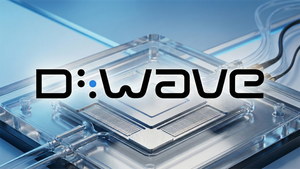ESS Technology to Demonstrate Value of Long-Duration Energy Storage in Military Applications
Project with U.S. Army Corps of Engineers Engineer Research and Development Center highlights opportunity for LDES to reduce diesel consumption and improve energy resilience in remote applications
ESS Tech, Inc. (“ESS”) (NYSE: GWH), a leading manufacturer of flexible, sustainable and responsible long-duration energy storage systems for commercial and utility-scale applications, today announced the commissioning of an Energy Warehouse (EW) system at the Contingency Base Integration Training Evaluation Center (CBITEC) operated by the US Army Corps of Engineers (USACE) Engineer Research and Development Center (ERDC) , located at Fort Leonard Wood, Mo.
ESS is currently delivering EWs to utility and industrial customers worldwide. The recently commissioned unit at the CBITEC replaces a prototype ESS system, initially deployed in 2016, and completes ESS’ obligations under the original agreement with the USACE. The new EW has been incorporated into a tactical microgrid at CBITEC and will demonstrate the key role that long-duration energy storage, specifically iron flow battery technology, can play to reduce fuel consumption at Contingency Bases (CB) such as Forward Operating Bases or other temporary use locations providing humanitarian assistance or disaster relief.
“Flexible, long-duration energy storage, like the ESS system, reduces total runtime on generators while increasing efficiency and allowing generators to last longer at Forward Operating Bases,” said Tom Decker, Operational Energy program manager at USACE ERDC. “ESS’ safe and resilient technology can dramatically reduce refueling logistics requirements and has the potential to assist in transition to renewable energy. We look forward to demonstrating to all service branches how incorporating an iron flow battery can increase resiliency in military power applications.”
“We are pleased to continue our partnership with USACE ERDC with delivery of an Energy Warehouse. This project will demonstrate the critical role of energy storage for energy security in remote and challenging locations,” said Eric Dresselhuys, CEO of ESS. “We are proud to provide a solution that can support the critical mission of our armed forces worldwide.”
Currently, most CBs are powered by diesel generators which continually adjust output to meet demand. Variation in output results in inefficient operation, increasing fuel consumption. The delivery of fuel to military bases overseas often happens at a 4:1 ratio in previous conflicts and could be as much as 10:1 in future conflicts, potentially putting personnel at risk. Thus, reducing fuel demand at CBs reduces costs and emissions while also reducing unnecessary fuel resupply.
The tactical microgrid at the CBITEC is used to simulate a variety of conditions experienced at CBs in the field and will demonstrate the opportunity for energy storage to optimize diesel generator performance. It is expected that the addition of long-duration energy storage to microgrids at CBs will enable generators to operate at peak efficiency and could reduce diesel consumption by up to 40%. In addition, the microgrid at CBITEC can be leveraged to test the incorporation of solar generation, further reducing the need for diesel fuel.
ESS iron flow technology provides resilient long-duration energy storage and is ideal for applications that require up to twelve hours of flexible energy capacity. ESS systems are well-suited for multiple use cases including utility-scale renewable energy installations, remote microgrids, energy resilience applications, solar load-shifting and peak shaving, and other ancillary grid services. ESS technology is safe, sustainable and has a 25-year design life with unlimited cycling and without capacity fade.
About ESS
At ESS (NYSE: GWH), our mission is to accelerate global decarbonization by providing safe, sustainable, long-duration energy storage that powers people, communities and businesses with clean, renewable energy anytime and anywhere it’s needed. As more renewable energy is added to the grid, long- duration energy storage is essential to providing the reliability and resiliency we need when the sun is not shining and the wind is not blowing.
Our technology uses earth-abundant iron, salt and water to deliver environmentally safe solutions capable of providing up to 12 hours of flexible energy capacity for commercial and utility-scale energy storage applications. Established in 2011, ESS Inc. enables project developers, independent power producers, utilities and other large energy users to deploy reliable, sustainable long-duration energy storage solutions. For more information visit www.essinc.com.
Forward-Looking Statements
This communication contains certain forward-looking statements regarding ESS and its management team’s expectations, hopes, beliefs, or intentions regarding the future. The words “estimate”, “expect”, “will” and similar expressions may identify forward-looking statements, but the absence of these words does not mean that a statement is not forward-looking. Examples of forward-looking statements include, among others, statements regarding the relationship between ESS and its customers and ESS’ performance under customer contracts. These forward-looking statements are based on ESS’ current expectations and beliefs concerning future developments. Many factors could cause actual future events to differ materially from such expectations, including, but not limited to, disruptions, or quality control problems in the Company’s manufacturing operations; challenges related to the collaboration between ESS and Honeywell; as well as those risks and uncertainties set forth in the section entitled “Risk Factors” in the Company’s Quarterly Report on Form 10-Q for the nine months ended September 30, 2023, filed with the Securities and Exchange Commission (the “SEC”) on November 14, 2023, and its other filings filed with the SEC. Except as required by law, ESS is not undertaking any obligation to update or revise any forward-looking statements whether as a result of new information, future events or otherwise.
View source version on businesswire.com: https://www.businesswire.com/news/home/20240115003672/en/
Contacts
Investors:
Erik Bylin
Investors@essinc.com
Media:
Morgan Pitts
503.568.0755
morgan.pitts@essinc.com
More News
View More




Recent Quotes
View MoreQuotes delayed at least 20 minutes.
By accessing this page, you agree to the Privacy Policy and Terms Of Service.